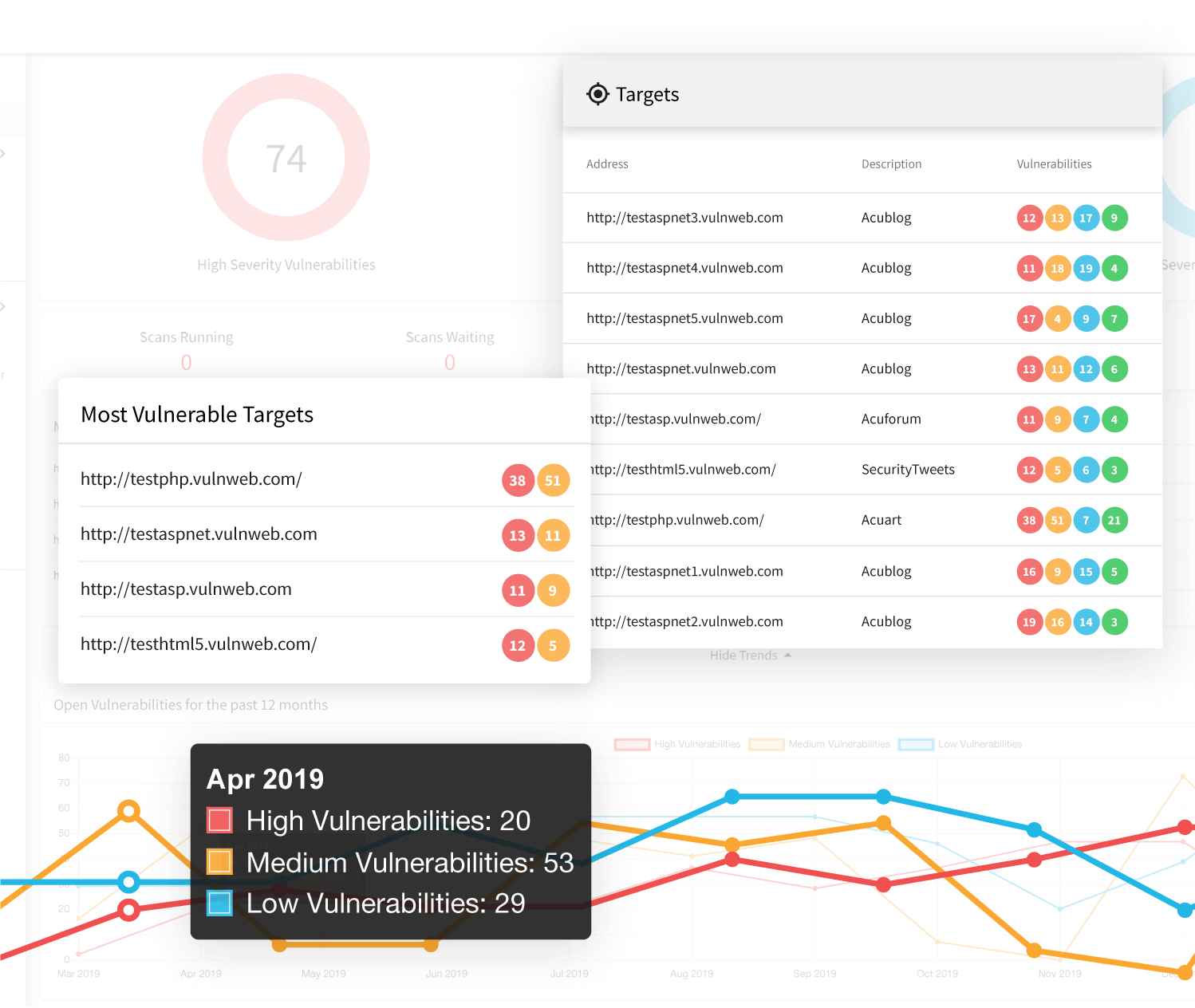
Industry-Leading Technology Coverage
Acunetix has a relentless focus on delivering the signal from the noise, and as such, does not waste your time with false positives. Moreover, it can detect advanced security vulnerabilities such as Blind Cross-site Scripting (Blind XSS) and Out-of-band SQL injection (OOB SQLi), whilst also being blazing fast thanks to its SmartScan and DeepScan technologies. With Acunetix, information security teams can set up scheduled automated penetration testing scans, to discover thousands of web application vulnerabilities and misconfigurations. They can then quickly and easily generate reports highlighting what actions need to be taken in order to improve their security posture. While the Nessus web application scanner will likely be able to crawl and scan some of your legacy technologies, Acunetix takes technology support to another level entirely. The Acunetix DeepScan incorporates a real “headless” browser within its crawler, allowing it to deliver top-notch JavaScript support, including ECMAScript 6 (ES6) support.Speed Not at the Expense of Accuracy
With nearly any type of black-box scanning, there is generally a tradeoff between speed and accuracy. With a re-architected core and a highly optimized crawler, the Acunetix key feature is speed without sacrificing accuracy. This allows it to scan enormous web applications containing hundreds of thousands of pages quickly, without reporting a sea of false positives. Integrations with third-party penetration testing software like PortSwigger Burp Suite and web application firewalls (WAFs) such as Imperva SecureSphere and F5 Big-IP ASM make it easy to import and export crucial data in formats that matter to getting vulnerabilities fixed.Frequently asked questions
Nessus is one of the oldest network security scanners on the market. It was first created in 1988 as open-source software. In 2005 Tenable (co-founded by the Nessus author) decided to commercialize the project. Free Nessus was continued as GNessUs and then as OpenVAS. Nessus was never a web vulnerability scanner but it has limited web scanning functionality.
You should choose Acunetix if you are primarily concerned about web application security. Nessus is not a specialized web application security product and offers limited web security scanning capabilities.
Why should web security be more important than network security?
You should choose Nessus if you are primarily concerned about network security. Nessus has always focused on network security and is one of the best network security products on the market. If your focus is on web application security, choose a specialized solution like Acunetix instead.
Find out why we believe that a specialized solution is better.
Recommended reading
Learn more about prominent vulnerabilities, keep up with recent product updates, and catch the latest news from Acunetix.

“We use Acunetix as part of our Security in the SDLC and to test code in DEV and SIT before being promoted to Production.”
Kurt Zanzi, Xerox CA-MMIS Information Securtiy Office, Xerox